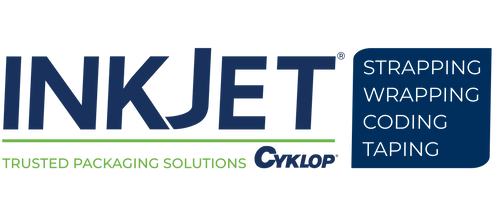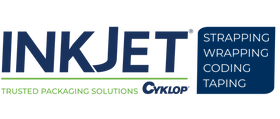Continuous Inkjet Printer: Advantages and Disadvantages | InkJet, Inc
Continuous inkjet (CIJ) printers are extremely popular industrial printing systems. CIJ printers can place barcodes, lot codes, expiration dates, and other essential markings directly onto products. They do this via a contactless printing process that allows for continuous printing on both porous and non-porous substrates, regardless of whether the surfaces are flat or curved.
In this guide on continuous inkjet printer advantages and disadvantages, we will cover:
- The advantages of CIJ printing
- The disadvantages of CIJ printing
-
Common applications
Let’s dive into each and better understand how well a CIJ printer would fit in your operation.
Advantages of CIJ Printing
CIJ printers use a continuous circulation process that offers several benefits for industrial applications. Most notably, CIJ printers offer:
Fast Printing
The continuous inkjet system is centered around creating a pressurized, continuous stream of ink. CIJ machines can print on substrates faster than many other printers can achieve. For example, the average CIJ printer can apply codes to products moving at 1,000 feet per minute, while thermal inkjet (TIJ) printers usually can only apply them at around 300 feet per minute. While some TIJ printers can print as fast as CIJ printers, they are not suited to do this in the 24/7 continuous fashion that CIJ printers are designed for.
Consistent 24/7 Operation
CIJ printers are most frequently used to place markings such as lot codes, batch numbers, and product expiration dates. These ensure traceability, protect against counterfeiting, and are often required by distribution channels. Failure to apply clearly legible codes can result in fines from retailers and can even place manufacturers in violation of federal and/or state laws. To avoid these issues, companies must ensure proper marking that follows retailer requirements and governmental regulations. CIJ printers can reliably deliver legible codes even under fast, continuous operation pressure.
Simple Maintenance
CIJ printers have few moving parts, making repair and maintenance easy, and most common problems are easy to avoid with routine maintenance.
Reliability
The operation and construction of continuous inkjet printers make them resistant to environmental factors that could cause issues for other printers. CIJ printers don’t apply heat to ink, as many other printers do, making them more resistant to higher production temperatures. Many CIJ printers offer operating ranges from 40-100+° F. CIJ models like the DuraCode are built from modular stainless steel with an IP55 designation, protecting them against other environmental factors like dust and humidity.
Versatile Ink Choices
CIJ printers are compatible with a wide variety of inks, making them suitable for a large number of porous and non-porous substrates. The contact-free printing method CIJ printers use enables printing on both flat and curved surfaces. As a result, CIJ printers can print on a variety of substrates.
Disadvantages of CIJ Printing
While CIJ printers offer valuable benefits, there are some drawbacks to adopting and operating them. As with most other pieces of industrial equipment, the aspects of a CIJ that provide its benefits also bring along its most significant disadvantages, which include:
Common Applications of CIJ Printing Systems
These advantages and disadvantages aren’t laid out to dictate whether a CIJ system is good or bad, but rather to decide what applications for which they are best used. CIJ printing systems are typically used for any applications that involve printing small, readable alphanumeric codes in large quantities. They can also print limited varieties of machine scannable codes, like barcodes and QR codes, but these will require them to print at lower speeds in order to increase the resolution.
They do not print at high enough resolution to create smaller machine-scannable codes like data matrix codes, and they don’t have enough print height to print large images. Most CIJ printers can only make markings up to ¾ of an inch tall.
Bottom Line
CIJ printers provide reliable, consistent, and accurate results for many industrial marking applications. Their capacity for 24/7 operation makes them a perfect fit for high-volume operations, and gives them an edge against other printing solutions in this context.
If you’re interested in integrating a CIJ printer into your production line, contact InkJet, Inc. today to get started.
To review more continuous inkjet printer advantages and disadvantages for your operation, contact InkJet, Inc. online today or call 1(800) 280-3245.



